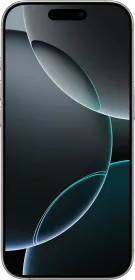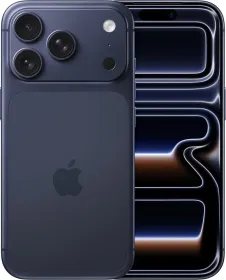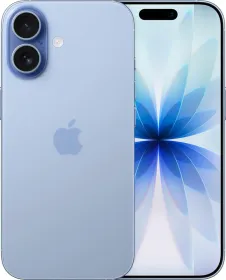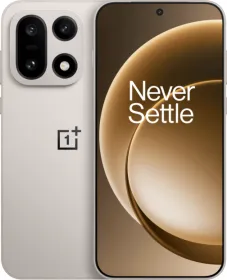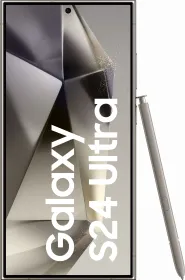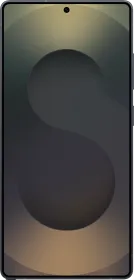The iPhone 16 Pro and Google Pixel 9 Pro XL were both unveiled recently, with Apple announcing its flagship on September 9 and Google releasing its model a month earlier. These devices are packed with impressive cameras, often considered some of the best in the smartphone world. But how do they really perform when put to the test in everyday scenarios?
To find out, I took both devices on a photo shoot around Hyderabad, capturing several photos. Spending a full day with these phones, I tested their main, ultra-wide, and telephoto lenses, as well as their portrait mode stills, across different lighting conditions. Here’s what I found about how these two flagship cameras stack up.
Jump to:
iPhone 16 Pro Camera Specifications
- Main: 48 MP Fusion Camera, f/1.8, 24 mm, 1/1.28”, dual-pixel PDAF, sensor-shift OIS
- Ultra-Wide: 48 MP, f/2.2, 13 mm, 1/2.6”, PDAF
- Telephoto: 12 MP 5x Tetra Prism, f/2.8, 120 mm, 1/3.06”, dual-pixel PDAF, 3D sensor‑shift OIS
- TOF 3D LiDAR scanner
iPhone 16 Pro vs. Google Pixel 9 Pro XL: Main Camera
First, let’s dive into the main camera performance between the iPhone 16 Pro and Google Pixel 9 Pro XL in daylight, low light, and portrait mode.
Main Cameras in Daylight
In bright conditions, the iPhone 16 Pro tends to produce warmer photos, while the Pixel 9 Pro XL captures cooler ones. By default, the iPhone takes 24 MP shots in the HEIF format, giving you smaller file sizes but higher resolution.
On the other hand, the Pixel shoots 12 MP photos in JPEG format. The file sizes can vary depending on the scene, sometimes being larger or smaller than the iPhone’s. Thus, the iPhone’s photos are more detailed but the HEIF format is not as compatible as JPEG/JPG.


Both phones have done well here but in comparison, both have contrasting styles. In the above photo, the iPhone prefers to keep slightly warm tones while the Pixel 9 Pro XL prefers to slide with slightly cold tones. Both have a good amount of detail with excellent color tones.


The iPhone 16 Pro generally preserves more detail, but noise can creep into shadows if you zoom in. The Pixel, however, smooths out this noise better, making it less noticeable. Both phones deliver sharp photos with good dynamic range, but each has its quirks. The iPhone has a better HDR look in most of the shots, while the Pixel doesn’t do as good of an HDR.


The iPhone often struggles with white balance, and so does the Pixel. The iPhone has new tone-adjustment features, and with the Pixel, you can manually adjust the white balance in the camera app every time you want to shoot.


Chromatic aberration isn’t really an issue on either phone, and when looking at 1x photos, you’ll notice that the iPhone stays consistent with its warmer tones, while the Pixel keeps things cool. The iPhone does better in preserving shadows most of the time, but the Pixel sometimes underexposes shadows or brightens highlights depending on the scene.
Winner: iPhone 16 Pro
Portraits Using Primary Sensors
Portrait mode is where things get interesting. The iPhone captures more pleasing tones but occasionally struggles with HDR, especially when shooting backlit. The Pixel handles backlit subjects better but sometimes messes up skin tones.


As seen in the shot above, the iPhone does better in 1x portrait mode. Its bokeh (background blur) also looks more natural when compared to the Pixel 9 Pro XL. It should be noted that, on the Pixel, you’re limited to shooting portraits at 1.5x or 2x, which could be a downside for some. You can take a photo in 1x and then apply the bokeh in the Google Photos app, but that’s one more step to take a portrait.
Winner: iPhone 16 Pro
Low-light shots Using Primary Sensor


In low light, the iPhone shines. It captures more detail, and its sharpness and texture are better, as seen in the comparison above. The iPhone’s night mode kicks in automatically, whereas with the Pixel, you have the option to activate “Night Sight” for a long exposure, which gives better results but takes a bit more time. Lens flare is an issue on both devices. Nevertheless, still, the iPhone takes the win in this regard.


In the images above, both shots were taken indoors with artificial lighting. The photo captured with the iPhone 16 Pro is well-exposed and has managed to capture the scene with good details. The texture of the wall tile, the colors on the wall frames, and the coffee table are all intact. However, the photo taken with the Pixel 9 Pro XL looks comparatively dull, perhaps courtesy of its love for a cooler tone.


Here the competition is really close. The iPhone seems to be producing an overall more balanced shot, but the Pixel seems to be pushing shadows up, which makes cabs a bit more visible.


Once again, the iPhone appears to be performing better in low-light portraits using the primary camera. The Pixel’s blur looks slightly unnatural. Not only that, the Pixel also missed the edge detection, especially at the lower half of the subject. The iPhone has achieved excellent white balance with a good level of detail. The trousers are clearly visible in the image on the left, while they blend into the background in the image on the right.
Winner: iPhone 16 Pro
iPhone 16 Pro vs. Google Pixel 9 Pro XL: Ultra-Wide Camera
When it comes to the ultra-wide camera, the Google Pixel 9 Pro XL has a slightly larger sensor and a wider aperture than the iPhone 16 Pro. But how do they compare in real-world performance? Let’s find out.
Ultra-wide Daylight


In daylight, both perform impressively, but the Pixel 9 Pro XL tends to excel more often, especially when it nails the white balance. The iPhone, on the other hand, pushes for that HDR look, which some might prefer, but personally, I’m not a fan.
Winner: Draw
Macros Using Ultra-wide Sensors


As for macro shots, the Pixel 9 Pro XL takes the win. Its sharpness in macro photos is on point, and these shots are more “social media ready” right out of the camera. The iPhone, by comparison, produces warmer, slightly yellowish macro shots that lack the same sharpness.
The Pixel does some artificial sharpening to achieve such results. Plus, the white balance is spot-on with the Pixel, even for macros. The Pixel


Winner: Google Pixel 9 Pro XL
Ultra Wide Camera Performance in Low-light


In low-light conditions, the Pixel does a little better, especially around the edges where it reduces noise better. The iPhone doesn’t do as well in smoothing out noise, so it often ends up with a bit more of it. However, the overall detail between both phones remains pretty much the same.


Oddly enough, in some low-light situations, the iPhone manages to get better exposure, while the Pixel sometimes over-brightens the image. The trade-off is that the iPhone’s low-light shots can look too dark at times, so it’s a bit of a toss-up here.
Winner: Draw
iPhone 16 Pro vs. Google Pixel 9 Pro XL: Telephoto Camera
Let’s talk about the telephoto lenses on both devices. The Google Pixel 9 Pro XL has a 5x telephoto lens, and overall, it’s superior, mainly due to its larger sensor size. Both telephoto lenses, however, have the same f/2.8 aperture. The Pixel 9 Pro XL shoots at 110 mm, while the iPhone 16 Pro shoots at 120 mm.
Telephoto Sensors in Action in Daylight


One thing you’ll notice is color consistency. On the Pixel 9 Pro XL, the telephoto lens’ color tones can sometimes differ from the main camera. On the other hand, the iPhone 16 Pro maintains better color consistency between its main and telephoto lenses, giving it an edge in that regard.
When it comes to detail, the Pixel 9 Pro XL delivers sharper, cleaner photos with less noise and fewer issues like chromatic aberration, which the iPhone struggles with a bit more.


In the comparison above, you will spot some grain on the iPhone’s shot, especially on the sign board. The Pixel smoothens that noise and makes the sign board look clean. White balance tends to stay consistent on both phones, but the Pixel leans toward cooler tones while the iPhone leans warmer.


Winner: Draw
Portraits Using 5X Telephoto
For portraits, the iPhone delivers more pleasing bokeh and often better skin tones, while the Pixel looks a bit oversharpened and doesn’t handle portraits as gracefully. Plus, the iPhone lets you shoot directly in 5x portrait mode, while the Pixel requires you to shoot in photo mode and apply blur afterward, which isn’t at all ideal.
Here, the iPhone missed the edge detection by a bit but the overall shot looks better. The Pixel went for a saturated and contrasty look, which does not look great.


Winner: iPhone 16 Pro
Telephoto Cameras in action in Low-light


The iPhone 16 Pro seems to be struggling with low-light photography in 5x. The issue comes down to how the phone handles zoom in low light. Instead of using its dedicated 5x optical zoom lens, the iPhone switches to the main lens and crops in.


On the Pixel, the 5x lens is available even in low light, giving it a clear advantage. The result is sharper, more detailed shots, while the iPhone’s cropped approach does leave images looking soft or lacking clarity.
Winner: Google Pixel 9 Pro XL
All-out Zoom Test





As for zoom, the Pixel 9 Pro XL takes the lead again, giving you more detail plus something called “zoom enhance.” However, this feature doesn’t make a massive difference, and it’s not something you’ll want to use for every photo.
In the shots above, you can clearly tell that the Pixel does an excellent job at cleaning up the final shots while the iPhone struggles with noise. Even after the cleanup, the Pixel seems to have slightly more detail than the iPhone. However, like in almost every other shot in this comparison, the Pixel tends to underexpose the shadows while the iPhone maintains that HDR look.
Winner: Google Pixel 9 Pro XL
Apple iPhone 16 Pro vs. Google Pixel 9 Pro XL Camera Comparision Verdict
iPhone 16 Pro Camera Scores - 8.33/10
| Category | Daylight | Portrait | Low-Light | Macros | All-out Zoom | Aggregate Score |
|---|---|---|---|---|---|---|
| Main Camera | 9.0/10 | 8.5/10 | 8.5/10 | – | – | 8.67/10 |
| Ultra Wide Camera | 8.5/10 | – | 8.0/10 | 7.5/10 | – | 8.17/10 |
| Telephoto Camera | 8.5/10 | 8.5/10 | 7.7/10 | – | 8.0/10 | 8.17/10 |
Google Pixel 9 Pro XL Camera Scores - 8.22/10
| Category | Daylight | Portrait | Low-Light | Macros | All-out Zoom | Aggregate Score |
|---|---|---|---|---|---|---|
| Main Camera | 8.2/10 | 8.2/10 | 8.0/10 | – | – | 8.13/10 |
| Ultra Wide Camera | 8.5/10 | – | 8.0/10 | 8.0/10 | – | 8.17/10 |
| Telephoto Camera | 8.5/10 | 8.0/10 | 8.0/10 | – | 8.1/10 | 8.15/10 |
Ultimately, if you want consistency and ease of use, especially in portraits, the iPhone 16 Pro is a solid choice. The iPhone also gets you a better HDR look, if you are a fan of it, and also a warmer tone, which many people like. It’s a great choice if you need an effortless camera experience with consistent results.
For those who prefer more flexibility in zoom, sharper details in telephoto shots, and a more manual approach (Pro mode), the Pixel 9 Pro XL should be the choice. Its macro mode shines, delivering social media-ready images with minimal effort. If zoom and detail are your priorities, the Pixel is the way to go.
Nonetheless, your choice depends on what you prioritize most in a smartphone camera.
You can follow Smartprix on Twitter, Facebook, Instagram, and Google News. Visit smartprix.com for the latest tech and auto news, reviews, and guides.


















